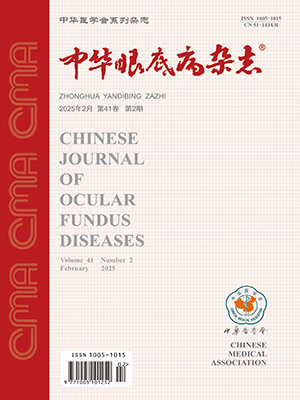| 1. |
韩光曙, 崔楠, 李志光. 发展中国家远程医疗发展模式及对我国的启示[J]. 中国卫生事业管理, 2018, 35(9): 641-643.Han GS, Cui L, Li ZG. The development model of telemedicine in developing countries and the enlightenment for China[J]. Chinese Health Service Management, 2018, 35(9): 641-643.
|
| 2. |
张潇, 陈有信. 眼科远程医疗发展现状与前景[J]. 协和医学杂志, 2021, 12(5): 755-760. DOI: 10.12290/xhyxzz.2021-0198.Zhang X, Chen YX. Current situation and prospect of teleophthalmology[J]. Medical Journal of Peking Union Medical College Hospital, 2021, 12(5): 755-760. DOI: 10.12290/xhyxzz.2021-0198.
|
| 3. |
国家卫生计生委. 国家卫生计生委办公厅关于印发远程医疗信息系统建设技术指南的通知[EB/OL]. (2022-01-04)[2014-12-10]. http://www.nhc.gov.cn/mohwsbwstjxxzx/s8555/201501/120c912de1c4474c95b345d001271368.shtml.National Health and Family Planning Commission. Notice of the General Office of the National Health and Family Planning Commission on printing and distributing the technical guidelines for the construction of telemedicine information system[EB/OL]. (2022-01-04)[2014-12-10]. http://www.nhc.gov.cn/mohwsbwstjxxzx/s8555/201501/120c912de1c4474c95b345d001271368.shtml.
|
| 4. |
马倩倩, 崔芳芳, 孙东旭, 等. 远程医疗会诊服务就诊人群分布以及就诊需求分析[J]. 中国医院管理, 2019, 39(9): 20-23.Ma QQ, Cui FF, Sun DX, et al. Analysis of the patients’ distribution and demand of telemedicine[J]. Chinese Hospital Management, 2019, 39(9): 20-23.
|
| 5. |
汤之明, 彭胜修, 张少华, 等. 基于互联网即时通讯工具微信构建心电图远程会诊系统[J]. 中国急诊医学, 2018, 38(3): 260-262. DOI: 10.3969/j.issn.1002-1949.2018.03.019.Tang ZM, Peng SX, Zhang SH, et al. Framing of electrocardiogram remote consultation system based on internet instant messaging tool WeChat[J]. Chin J Crit Care Mar, 2018, 38(3): 260-262. DOI: 10.3969/j.issn.1002-1949.2018.03.019.
|
| 6. |
郑汇娴, 熊巨洋. 疫情防控常态化下公立医院线上诊疗服务流程、问题及应对策略[J]. 中国社会医学杂志, 2021, 38(4): 371-374. DOI: 10.3969/j.issn.1673-5625.2021.04.004.Zheng HX, Xiong JY. Procedures, problems and measurements of online medical services in public hospitals under the context of the normalization of COVID-19 pandemic prevention and control[J]. Chinese Journal of Social Medicine, 2021, 38(4): 371-374. DOI: 10.3969/j.issn.1673-5625.2021.04.004.
|
| 7. |
顾海, 吴迪, 韩光曙, 等. 我国区域远程会诊服务平台构建研究[J]. 中国卫生政策研究, 2019, 12(7): 65-69. DOI: 10.3969/j.issn.1674-2982.2019.07.010.Gu H, Wu D, Han GS, et al. Study on the construction of regional remote consultation service platform in China[J]. Chinese Journal of Health Policy, 2019, 12(7): 65-69. DOI: 10.3969/j.issn.1674-2982.2019.07.010.
|
| 8. |
张然. 申请方医生持续参与远程会诊意愿影响因素研究[D]. 郑州大学, 2021.Zhang R. Research on the factors influencing applicant's doctors' continuous using intention of teleconsulting[D]. Zhengzhou University, 2021.
|
| 9. |
He X, Wang L, Wang L, et al. Effectiveness of a cloud-based telepathology system in China: large-sample observational study[J/OL]. J Med Internet Res, 2021, 23(7): e23799[2021-07-29]. https://pubmed.ncbi.nlm.nih.gov/34326037/. DOI: 10.2196/23799.
|
| 10. |
Cui F, He X, Zhai Y, et al. Application of telemedicine services based on a regional telemedicine platform in China from 2014 to 2020: longitudinal trend analysis[J/OL]. J Med Internet Res, 2021, 23(7): e28009[2021-07-12]. https://pubmed.ncbi.nlm.nih.gov/34255686/. DOI: 10.2196/ 28009.
|
| 11. |
Maresova P, Javanmardi E, Barakovic S, et al. Consequences of chronic diseases and other limitations associated with old age-a scoping review[J/OL]. BMC Public Health, 2019, 19(1): 1431[2019-11-01]. https://pubmed.ncbi.nlm.nih.gov/31675997/. DOI: 10.1186/s12889-019-7762-5.
|
| 12. |
Lyu J, Zhang W, Li W, et al. Epidemic of chronic diseases and the related healthy lifestyle interventions in rural areas of Shandong Province, China[J]. BMC Public Health, 2020, 20(1): 606. DOI: 10.1186/s12889-020-08729-y.
|
| 13. |
魏世辉, 赵家良. 积极推进我国神经眼科学的发展[J]. 中华眼科杂志, 2010, 46(12): 1059-1061. DOI: 10.3760/cma.j.issn.0412-4081.2010.12.002.Wei SH, Zhao JL. Actively promote the development of neuro-ophthalmology in China[J]. Chin J Ophthalmol, 2010, 46(12): 1059-1061. DOI: 10.3760/cma.j.issn.0412-4081.2010.12.002.
|
| 14. |
国务院办公厅. 《关于促进"互联网+医疗健康"发展的意见》印发[EB/OL]. (2022-01-04)[2018 -04-28]. http://www.gov.cn/gongbao/content/2018/content_5291365.htm.General Office of the State Council. "Opinions on Promoting the Development of ‘Internet+Medical Health’" issued[EB/OL]. (2022-01-04)[2018 -04-28]. http://www.gov.cn/gongbao/content/2018/content_5291365.htm.
|
| 15. |
徐建. 远程医疗应用现状、挑战及思考[J]. 医学信息学杂志, 2021, 42(9): 59-62. DOI: 10.3969/j.issn.1673-6036.2021.09.011.Xu J. The current status, challenges and considerations on the application of telemedicine[J]. Journal of Medical Intelligence, 2021, 42(9): 59-62. DOI: 10.3969/j.issn.1673-6036.2021.09.011.
|
| 16. |
翟运开, 赵端端, 高景宏, 等. 远程会诊服务下医-医知识转移影响因素研究[J]. 中国医院管理, 2019, 39(9): 27-29.Zhai YK, Zhao DD, Gao JH, et al. Analysis of influence factors of doctor-doctor knowledge transfer under teleconsultation service[J]. Chinese Hospital Management, 2019, 39(9): 27-29.
|




